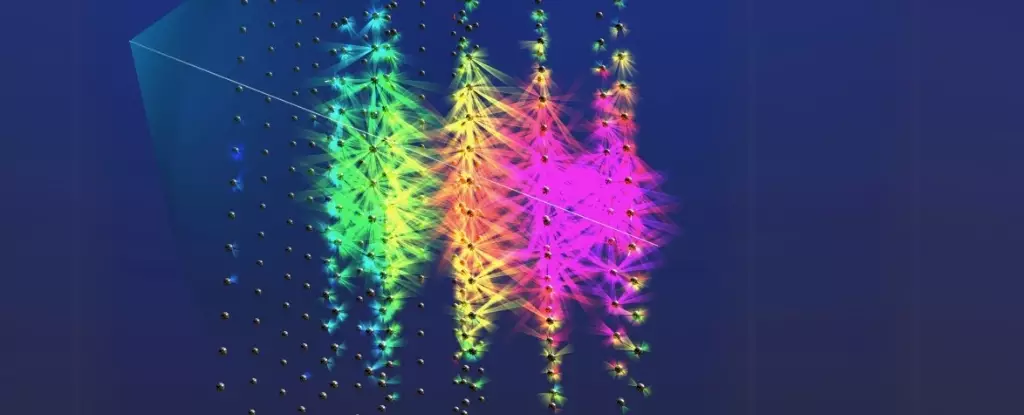Neutrinos are fascinating elementary particles that intrigue scientists across the globe. They are nearly massless and carry no electric charge, shrouding themselves in mystery as they zip through space and matter. Billions of these elusive particles pass through our bodies each second without us noticing, owing to their weak interactions with matter. Their insubstantial nature, however, makes detecting them a formidable challenge. Researchers must harness vast detectors made from materials like ice or deep-sea water to observe the few telltale signs of their existence—primarily through the fleeting flashes of light generated when they interact with atomic matter.
On February 13, 2023, the oceanic depths off the coast of Sicily became the stage for an extraordinary event when the Cubic Kilometer Neutrino Telescope (KM3NeT), resting 3,450 meters beneath the Mediterranean Sea, registered a neutrino with a groundbreaking energy level. This detection is monumental not just for its raw energy, measured at an astonishing 220 petaelectronvolts (PeV), but also for its implications on our understanding of cosmic phenomena.
Breaking Records: The Neutrino That Changed the Game
The registered neutrino shattered previous records, which peaked at 10 PeV, thus positioning this event as a potential turning point in high-energy astrophysics. This surge of energy invites speculation on its origin, as few cosmic entities possess the capability to accelerate particles to such staggering velocities. Leading candidates for such high-energy phenomena include blazars—active supermassive black holes emitting jets of radiation directed nearly toward Earth.
Additionally, this neutrino could signify an unprecedented cosmogenic origin, suggesting that the particle emerged from interactions between cosmic rays and the cosmic microwave background radiation—a remnant from the Big Bang. If validated, this would not only represent the first confirmed cosmogenic neutrino but could also affirm our theories surrounding the universe’s evolution right after its inception.
The Mechanics of Detection: A Marvel of Engineering
The detection process of neutrinos is a feat of engineering and ingenuity. KM3NeT employs 378 detector modules, each equipped with 31 light-sensitive detectors, to create a vigilant surveillance system for these elusive particles. During the event, more than 28,000 photons were detected, illuminating the considerable impact of the neutrino’s passage. The secondary particles produced during the neutrino’s interactions traverse the surrounding medium, providing crucial information about the original particle.
The accompanying muon, created as a result of this interaction, exhibited an energy of around 120 PeV, which is staggering for such particles and lends credence to the high-energy pedigree of its parent neutrino. The challenge lies not only in observing these minuscule interactions but also in tracing their origin—an endeavor that can be likened to searching for a needle in a cosmic haystack.
After the neutrino was detected, a meticulous investigation was launched to identify its source. Scientists narrowed their scrutiny to four primary hypotheses: interactions within our galaxy, phenomena occurring outside our galaxy but still connected to the local universe, transient events such as gamma-ray bursts, and sources from distant galaxies.
Exhaustive research into these hypotheses ultimately pointed investigators toward the potential of an extragalactic origin, particularly involving blazars. With a multitude of blazars peppering the night sky, 12 potential candidates were pinpointed, yet uncertainties linger. As the research team commented, none of these connections can be deemed definitively compelling at this stage, reminiscent of a riddle waiting for a solution.
Looking forward, understanding the ultimate source of this unprecedentedly high-energy neutrino beckons further multidisciplinary investigations. Following any feasible leads could lead scientists closer to uncovering secrets embedded in the fabric of the cosmos. Whether the answer lies in the powerful jets of blazars or in the fascinating realm of cosmogenic neutrino production, the implications of this discovery stretch far beyond mere records.
This monumental event is a testament to the relentless curiosity of scientists who brave the depths of the oceans and the vastness of the cosmos in pursuit of fundamental truths. As we stand at the brink of potentially groundbreaking discoveries, the universe continues to present enigmas, inviting us to probe deeper into its mysteries.

